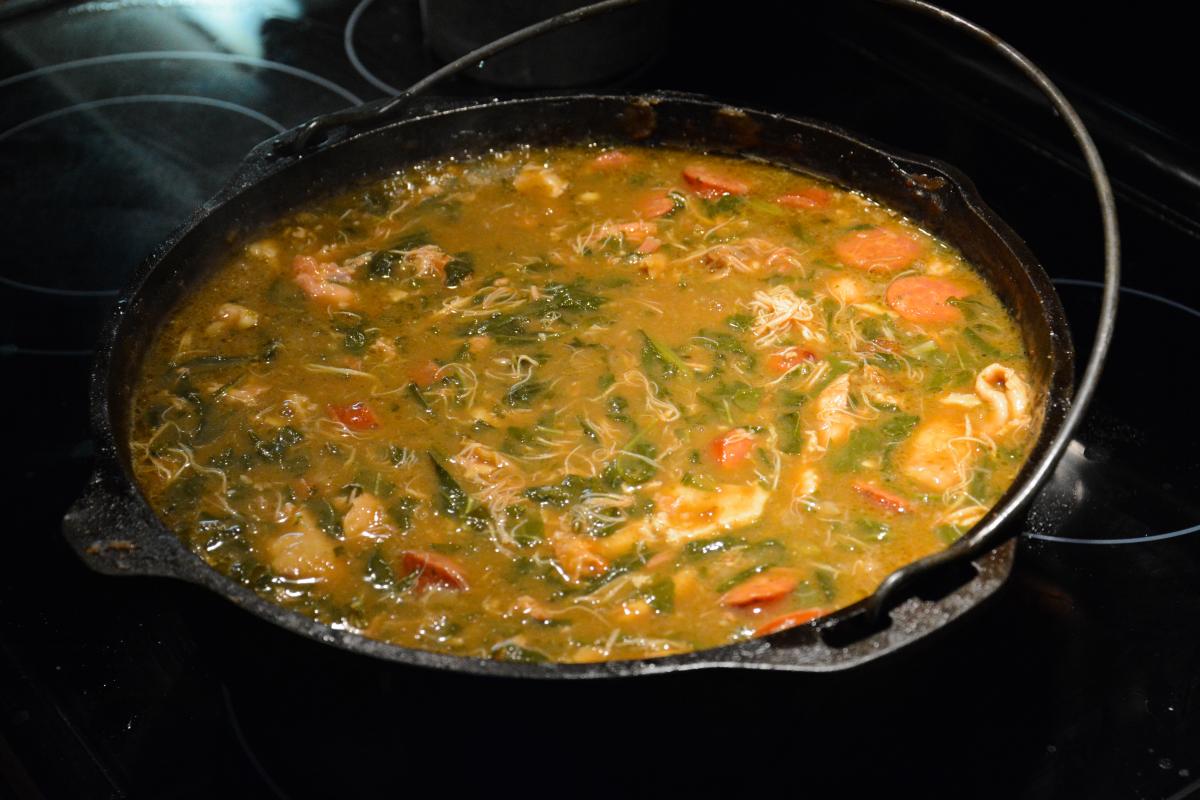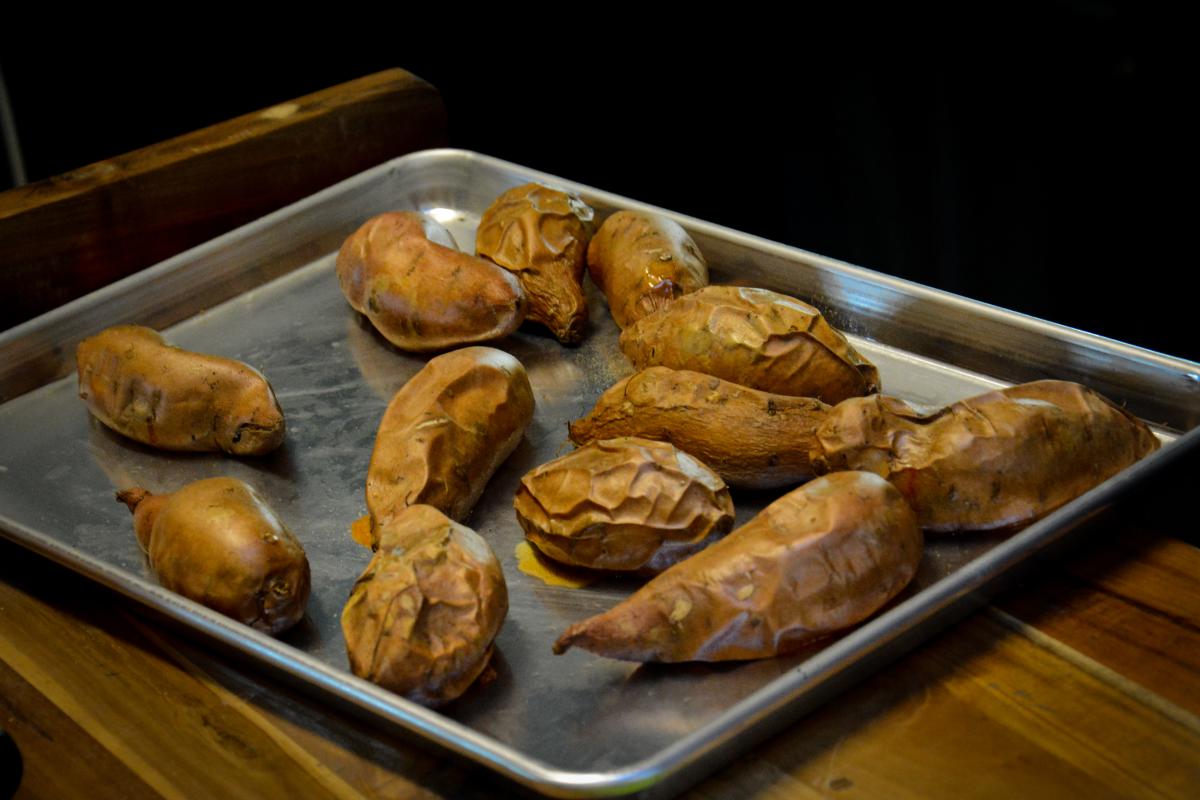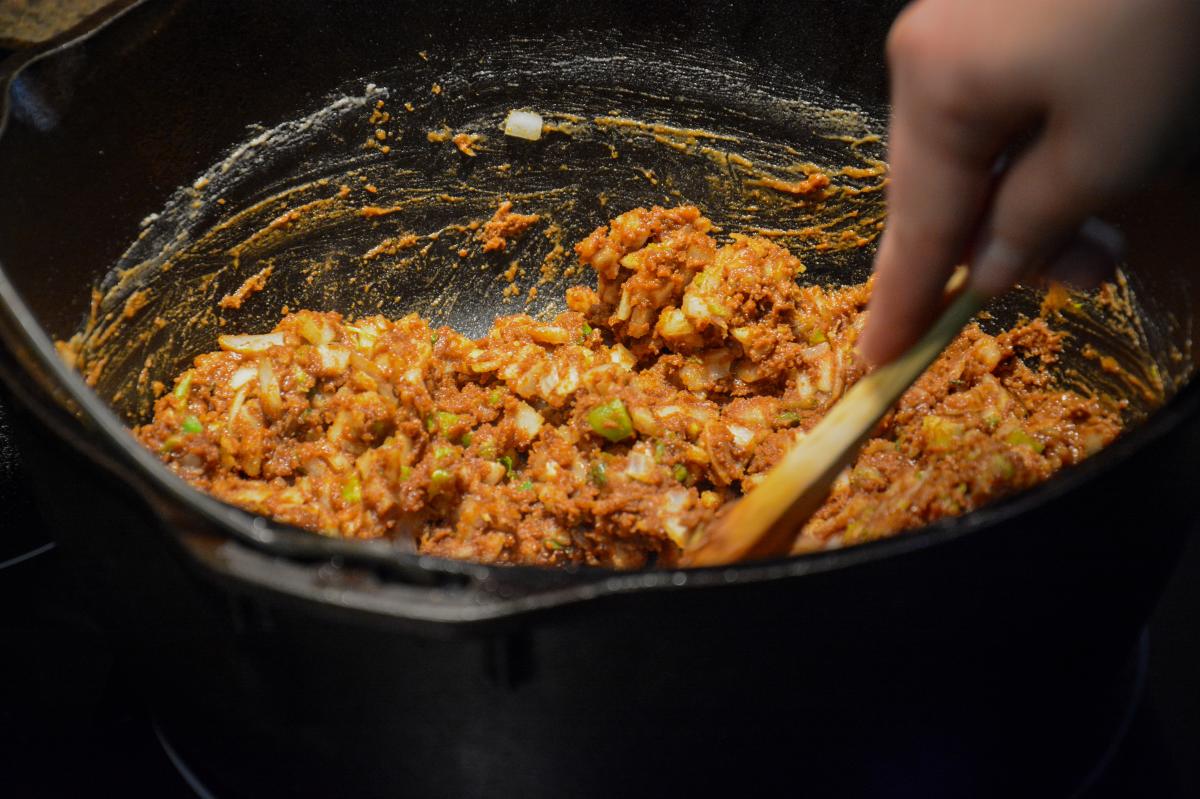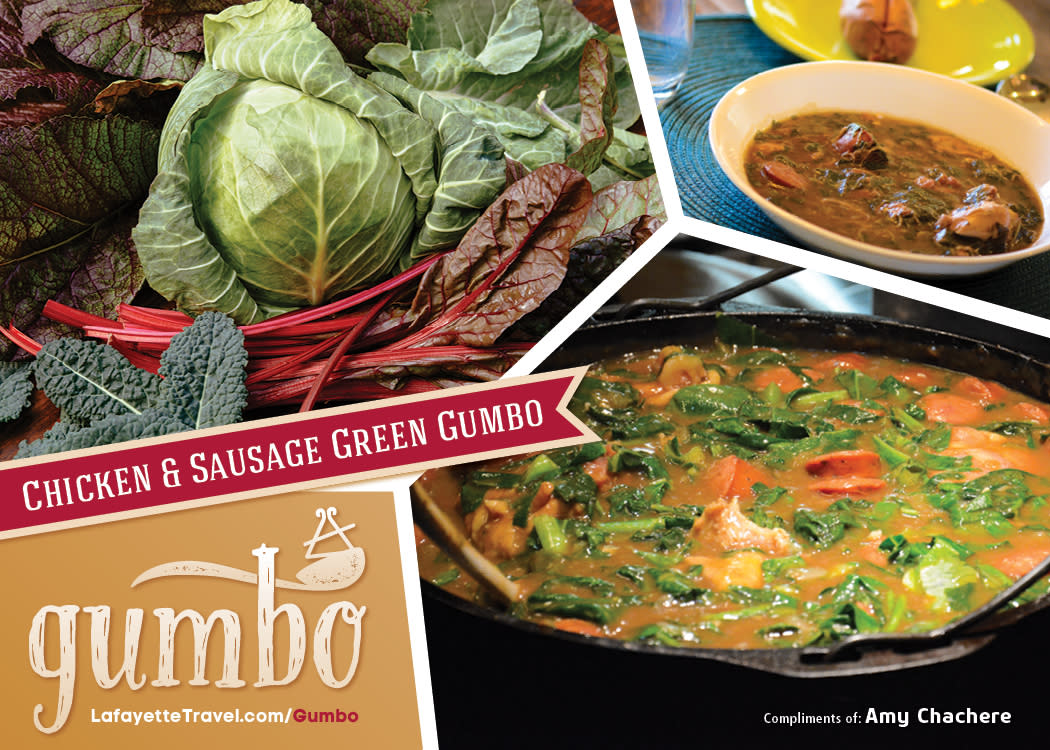On a culinary spectrum that is typically understood to vary between brown and darker brown, gumbo z’herbes stands out as the lone shade of green. Generally associated with Lent in heavily Catholic southern Louisiana, the so-called “green gumbo” breaks most of the rules generally associated with gumbo.

For starters, unlike its seafood and game-based cousins, the inclusion of animal proteins is optional. As its name would suggest, the primary flavor component of gumbo z’herbes is greens and herbs, and lots of them. Many recipes call for upwards of fifteen varieties of greens to be stewed, dissolved, and married in the eponymous gumbo pot. Collard greens, mustard greens, carrot greens, watercress, romaine, cabbage, beet tops, swiss chard, and kale are no strangers to this hearty, often meatless soup.

Like any Louisiana dish, the origins of Gumbo Z’herbes are somewhat mythical. It’s association with the Lenten season and frequent omission of meats has contributed to the long held tradition that it was a Catholic nod to Good Friday fasting and abstinence. A kind of farewell to the flesh of a different sort meant to keep you honest with your Lenten sacrificing, and in the right dietary mindset ahead of Christianity’s most important holiday.

Variations on the dish, however, lead to controversy on its cultural role. Frequently the hearty verdant flavors of green gumbo are buttressed by ham hocks, sausage, and pickled pork. Adherents to this variation maintain that green gumbo’s job is to prepare the faithful on Holy Thursday for a day’s worth of Good Friday fasting with a hearty and nutritious meal. Whichever way you cut it, it’s hard to separate any Louisiana dish with tradition, and the tradition of green gumbo is the Lenten season.

Sure to continue stirring up controversy in the making, green gumbo is perhaps the only “gumbo” that is served acceptably without roux. By many accounts what makes gumbo different than, say, chicken and okra soup, is its use of roux (a mixture of browned flour in oil) as a flavor base and thickening agent. Green gumbo, however, enjoys the moniker without roux as a required ingredient. To be sure and to make culinary definition that much more complicated, it’s not uncommon to find roux in a gumbo z’herbes, even if many don’t include it.

It begs the question, then, what makes a green gumbo a gumbo? While it is indeed served over rice like its extended gumbo family, that surely can’t be enough to call it gumbo. A purchase of chicken and rice soup at your grocery store should serve to rule rice out as the necessary condition. What makes green gumbo a gumbo is its laissez-faire, everyone-in-the-pot diversity of preparation. Gumbo, in general, as noted as early as 1885’s La Cuisine Creole is an effective vehicle for leftovers and scraps of all sources, be they flora or fauna. Green gumbo in particular participates in that tradition with a typical approach, if not with the typical ingredients. Why is green gumbo a gumbo if it breaks so many gumbo rules? In short, because Louisiana cooks make it, and because Louisiana cooks say so.
Click on the image below to download the recipe.

